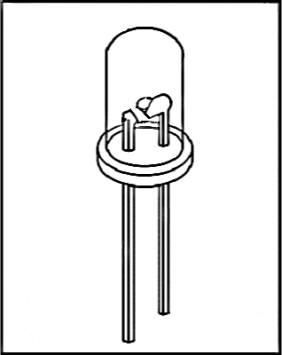

Developed into a practical component
product in 1962 and first used as status
and indicator lamps, and more recently
in appliance and TV backlighting, high-
brightness LEDs have emerged in recent
years. But only recently have they been
seriously looked upon as a feasible option
in general purpose lighting applications
such as vehicle signal lights.
Light-emitting diodes (LEDs) are solid-state
devices that convert electric energy directly
into light of a single color. Because they
employ "cold" light generating technology,
in which most of the energy is delivered in
the visible spectrum, LEDs don't waste
energy in the form of non-light producing
heat. In comparison, most of the energy in
an incandescent lamp is in the infrared
(or non-visible)
portion
of the spectrum.
As a result, both fluorescent and HID lamps
produce a great deal of heat.
In addition to producing cold light, LEDs:
Have a very fast "on-time" (60 nsec vs 10 msec for an incandescent lamp).
Have good color resolution and present low, or no, shock hazard.
Are small in size and resistant to vibration and shock and can include a focusing lens.
Can be integrated into a control system as in the Sweeplite.
LED TECHNOLOGY

SWEEPLITE ® is a registered trademark of Syntilla Systems Inc. All website images, video and content is copyright Syntilla Systems Inc. © 2011-2014 all rights are reserved.
Sweeplite is Patented Technology. Sweeplite Modules are made in the USA using domestic and internationally sourced components.
Vehicle Names and Models are the trademarks of their respective manufacturers and are for reference only.
--------
LED Technology